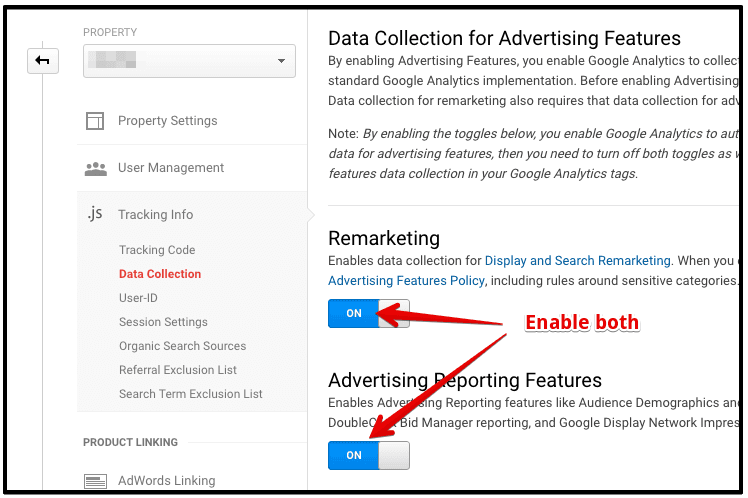Effective Strategies for Remarketing In Google Analytics
Effective Strategies for Remarketing In Google Analytics
Blog Article
Maximize Your ROI With Remarketing in Google Analytics
By utilizing the power of customer data and customizing ads to particular target market sections, organizations can considerably magnify their conversion prices. The trip to optimizing ROI through remarketing is a nuanced course paved with understandings and chances that can improve the trajectory of your advertising and marketing ventures.
Comprehending Remarketing in Google Analytics
Comprehending remarketing in Google Analytics is vital for optimizing your electronic marketing technique. Remarketing permits you to target users that have previously seen your web site or communicated with your app, providing them with tailored ads as they surf other websites or use various other applications within the Google Display Network. This technique helps keep your brand top of mind and motivates users to go back to your site, inevitably increasing the likelihood of conversion.
By making use of Google Analytics, you can track the performance of your remarketing projects, obtaining valuable insights right into customer behavior, interaction, and conversions. This data enables you to improve your targeting, messaging, and bidding approaches to enhance the total effectiveness of your projects.
Furthermore, understanding the various kinds of remarketing lists offered in Google Analytics, such as common, vibrant, and similar audiences, enables you to create very fractional and tailored projects customized to details user segments. This degree of granularity can substantially boost the significance and influence of your remarketing initiatives, eventually maximizing your return on financial investment.
Establishing Up Remarketing Lists
To efficiently carry out remarketing campaigns in Google Analytics, the initial action includes creating and setting up remarketing listings targeting specific user segments based on their interactions with your site or application. By establishing up remarketing listings, you can tailor your advertising and marketing initiatives to reach individuals who have actually already revealed passion in your service or products.
To start, navigate to the Admin area of your Google Analytics account and pick the Residential property where you want to develop the remarketing checklist. After that, under the Residential or commercial property column, click 'Audience Definitions' and choose 'Audiences.' Next, click the red 'New Target market' switch and pick 'Create New' to define the specifications for your remarketing list.

Crafting Reliable Remarketing Advertisements

When crafting your advertisements, concentrate on developing eye-catching headlines and engaging visuals that stick out to possible clients. Include solid calls-to-action that urge users to revisit your site and finish a preferred action. Use dynamic remarketing to show individualized ads featuring services or products that customers have actually previously viewed on your website.
In addition, guarantee that your ads are mobile-friendly given that a considerable section of web website traffic originates from mobile find more info gadgets. Test different advertisement variants to determine which messages and styles drive the finest results. By continuously refining and optimizing your remarketing advertisements based upon performance information, you can maximize their efficiency and enhance your return on financial investment.
Analyzing Remarketing Efficiency

Via Google Analytics, marketers can track the efficiency of their remarketing projects in real-time, permitting them to identify trends, patterns, and areas for renovation without delay. By analyzing the data, marketers can determine which ads are performing well, which target market segments are responding positively, and which networks are driving one of the most conversions. This degree of granularity allows marketers to make data-driven decisions to optimize their remarketing advocate far better outcomes.
Optimizing ROI With Remarketing
Assessing remarketing information in Google Analytics enables marketing professionals to identify possibilities for maximizing roi (ROI) via strategic adjustments - What Is “Remarketing” In Google Analytics?. To maximize ROI with remarketing, it is important to recognize the behavior of your target market. By assessing customer communications, such as the web pages they saw, the products they checked out, or the activities they handled your website, you can tailor your remarketing campaigns more successfully
Segmenting your target market based upon their behavior allows you to create personalized and targeted advertisements that are more probable to reverberate with them. By revealing pertinent advertisements to certain sections of your audience, you can increase the chances of conversion and ultimately improve your ROI.
Additionally, evaluating different advertisement creatives, messaging, and deals can aid recognize what reverberates best with your audience. A/B screening enables you to experiment with various components of your advertisements to identify what drives the greatest engagement and conversion prices.
Final Thought
Finally, making best use of ROI with remarketing in Google Analytics calls for a calculated strategy to evaluating user actions, segmenting target markets, developing customized ads, and maximizing campaign efficiency. By leveraging data-driven insights and testing different approaches, organizations can boost their remarketing initiatives to drive higher involvement pop over to these guys and conversion rates. This systematic technique guarantees that sources are successfully assigned in the direction of taking full advantage of returns on investment in remarketing projects.
Next off, click on the red 'New Audience' switch and pick 'Create New' to specify the parameters for your remarketing checklist.
By continuously refining and enhancing your remarketing advertisements based on performance data, you can optimize their performance and boost your return on investment.
By delving into these insights, online marketers can gain a comprehensive understanding of just how their remarketing efforts are resonating with their target audience and driving conversions. To take full advantage of ROI with remarketing, it is crucial to comprehend the actions of your audience.In conclusion, taking full advantage of ROI with remarketing in Google Analytics requires a tactical method to assessing user behavior, Source segmenting audiences, creating tailored advertisements, and maximizing campaign efficiency.
Report this page